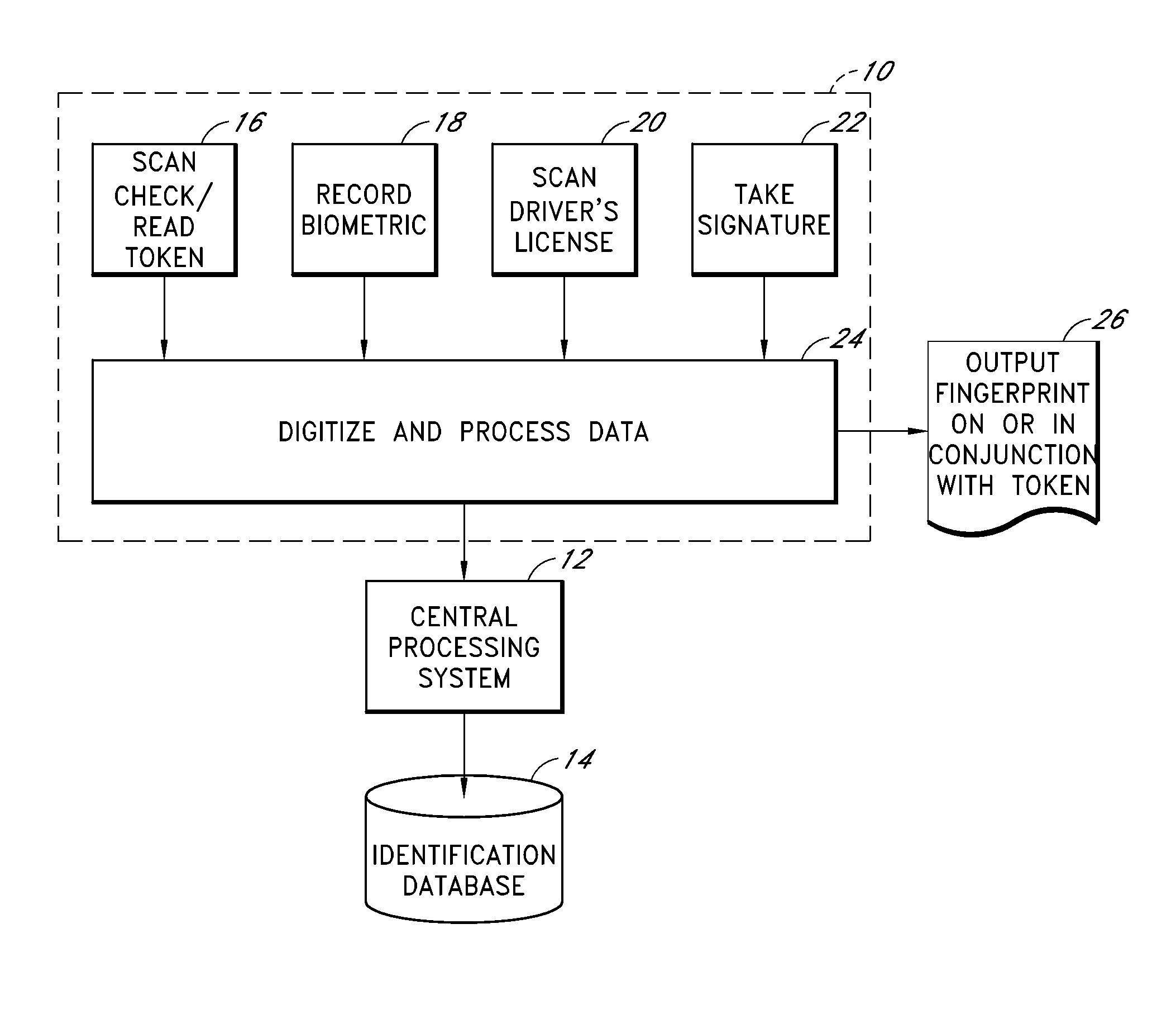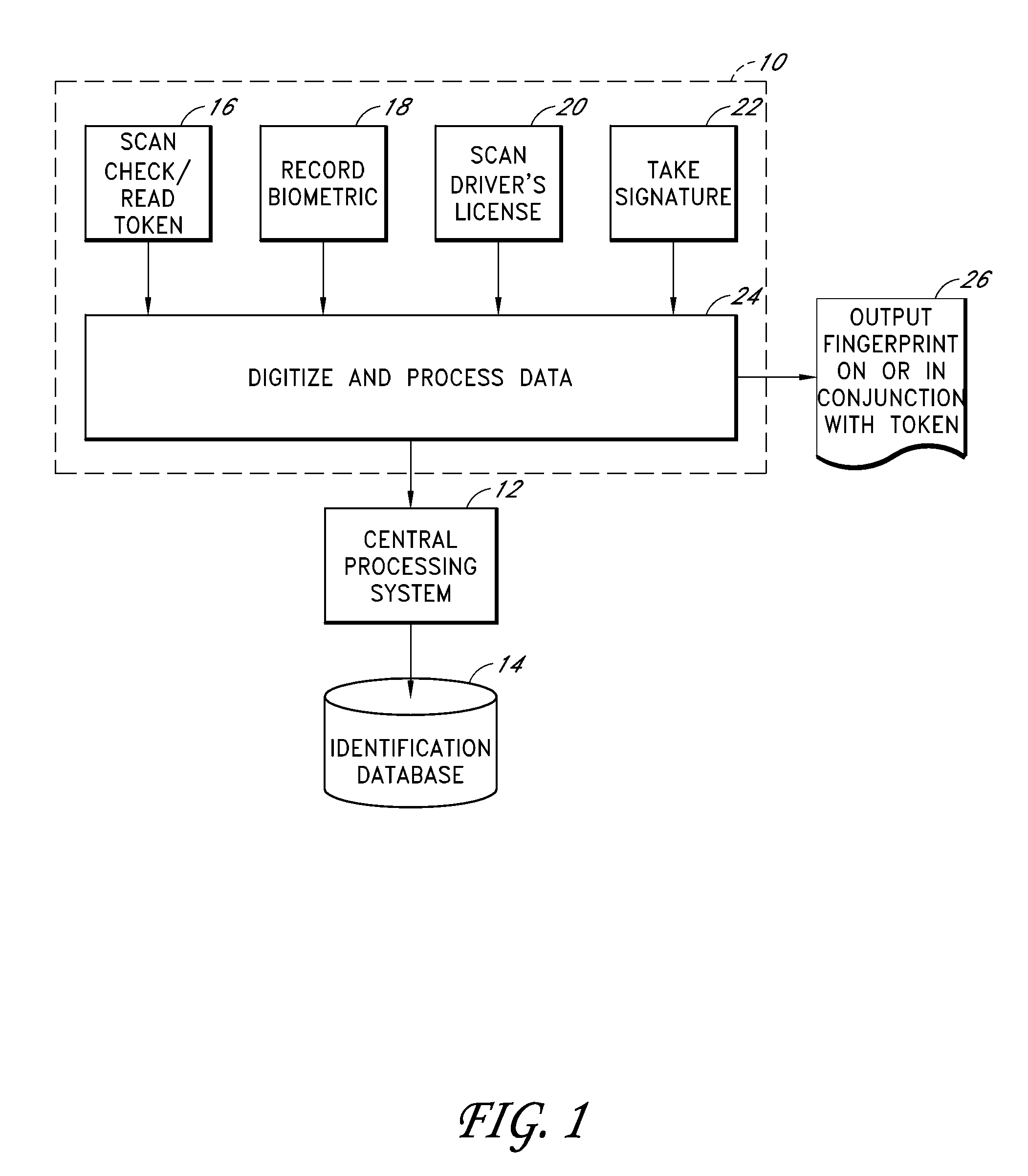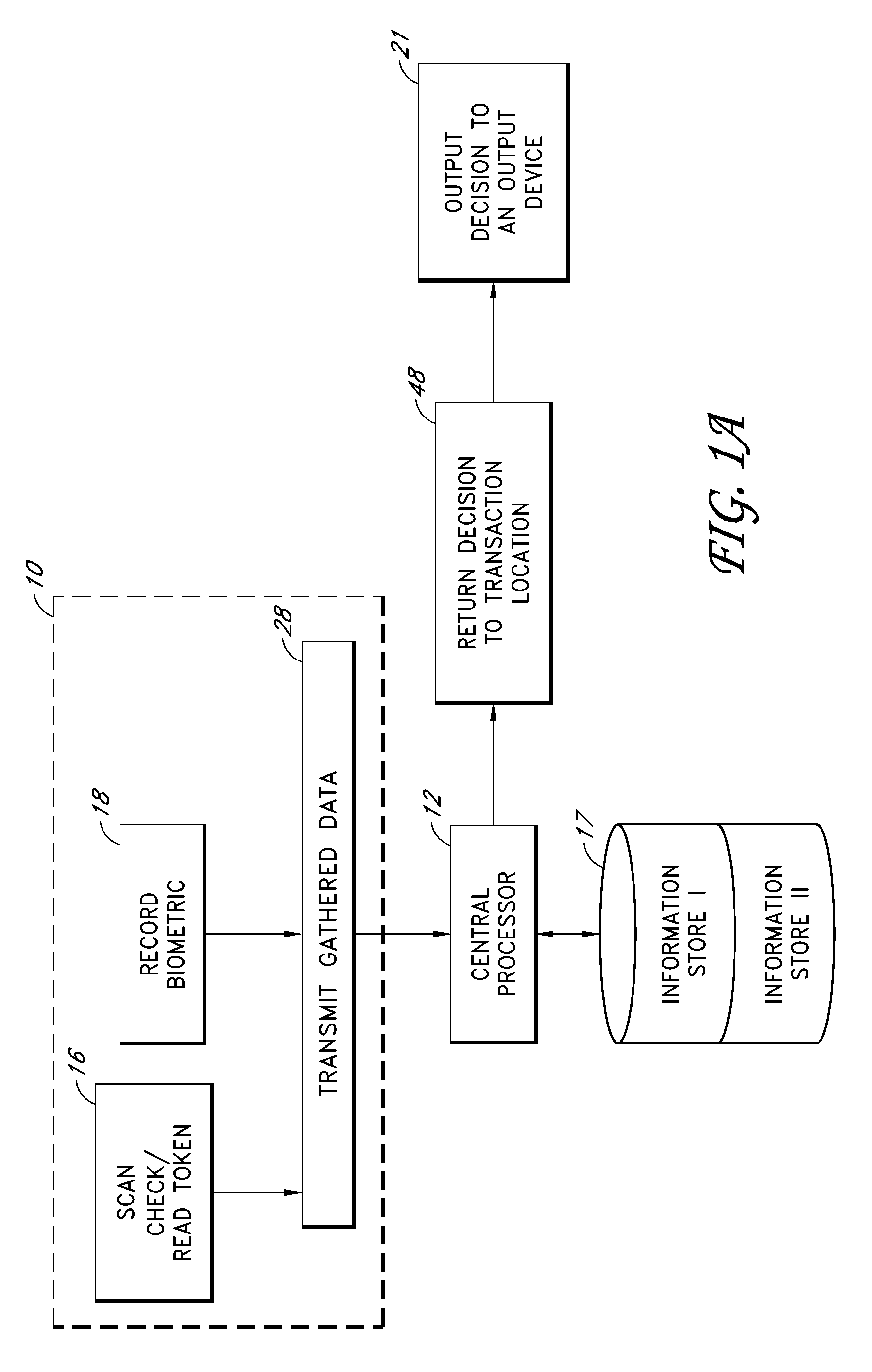Electronic transaction verification system with biometric authentication
a biometric authentication and electronic transaction technology, applied in the field of credit and identity verification systems, can solve the problems of difficult, if not impossible, voice recognition remains difficult to implement, and alternative methods of reducing fraudulent activity are not meeting the needs of industry, so as to reduce the risk of merchants accepting bad instruments
- Summary
- Abstract
- Description
- Claims
- Application Information
AI Technical Summary
Benefits of technology
Problems solved by technology
Method used
Image
Examples
Embodiment Construction
[0042]The following detailed description is directed to certain specific embodiments. Those skilled in the relevant art will recognize that many changes can be made to the embodiments described, while still obtaining the beneficial results described herein. It will also be apparent that some of the desired benefits of the various embodiments described herein can be obtained by selecting some of the features of the embodiments described herein without utilizing other features. Accordingly, those who work in the art will recognize that many modifications and adaptations to the present invention are possible and may even be desirable in certain circumstances and are a part of the present invention. Thus, the following description is provided as illustrative of the principles of the various embodiments of the electronic transaction verification system and not in limitation thereof, since the scope of the present disclosure is defined by the claims.
[0043]Referring now in greater detail t...
PUM
 Login to View More
Login to View More Abstract
Description
Claims
Application Information
 Login to View More
Login to View More - R&D
- Intellectual Property
- Life Sciences
- Materials
- Tech Scout
- Unparalleled Data Quality
- Higher Quality Content
- 60% Fewer Hallucinations
Browse by: Latest US Patents, China's latest patents, Technical Efficacy Thesaurus, Application Domain, Technology Topic, Popular Technical Reports.
© 2025 PatSnap. All rights reserved.Legal|Privacy policy|Modern Slavery Act Transparency Statement|Sitemap|About US| Contact US: help@patsnap.com



